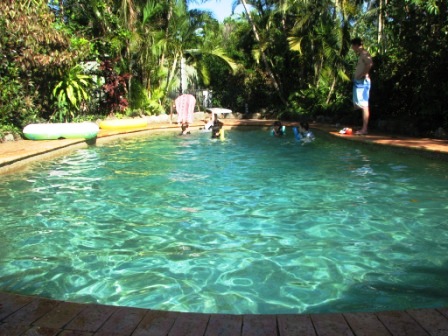Smelly Science

Science Experiments: Cloud in a bottle and Make your own Lava Lamp.
Cloud in a bottle (an experiment about water vapour) was unsuccessful. Although Boy loved lighting matches and dropping them into an empty water bottle, we think we may have set the experiment up wrongly and used an unsuitable bottle. When we read the instructions again, Boy nominated two things that may have gone wrong: he didn’t drain the bottle well enough and he had used hot water to first rinse the bottle. My analysis is that the lid of the bottle wasn’t sealing properly and the smoke escaped leaving insufficient smoke for the water vapour to cling to and produce a cloud. Although we did it three times Boy was unable to persevere any longer, he wanted to get straight to the next experiment and to the game he 
Make your own Lava Lamp was very successful. Boy loved it and now cannot wait for stepfather to come home so that he can do it again with an un-initiated onlooker. This is a measure of success: Boy wanting to repeat a learning sequence and educate another person. I’m going to post the whole experiment as a separate post to make it easy for other home schoolers to print out and replicate in their home.
Technology: The site that offered the two above experiments also has a neat online Fart Game. Boy was very eager to play it and I’m tipping it will become the latest obsession. The game concentrated on the power of farts to get things done (kill rats in a playground) and ways to reduce or improve the potency of farts. The aim was to kill 50 rats in as short a time as possible and to keep your health and fart potency levels up. Although not designed for math, it certainly assisted Boy in transferring raw scores to 
We also played an on-line fart quiz that includes history with a good deal of rot. Cool! And...do you have any idea of how many different words and phrases are integhangable for "fart". I had no idea.
Reading: Boy and I had to read all of the information about farts, pheromones and other smells. The subject matter piked Boy’s interest and he laughed aplenty. Although I read the majority of the information to him, straight from the web site, he sat at my laptop and scrolled, changed pages and backspaced to again read bits of information that he wanted clarified.
Home economics: Well…the learning was for me today! Boy wanted to make soup. I tried to explain that Soup takes hours and that I didn’t have the right ingredients. Annoyed, Boy held 
“But darling, that’s not new cooking. You know how to make that sort of soup.” Boy knows how to make cup-a-soup (one of his staples) but had NEVER considered that soup from a can was an option for him. While searching in our cyclone box for the matches to complete the Cloud in a bottle experiment, Boy discovered the stockpile of emergency tin food.
What appeared to be an innocuous cop out and boring home school lesson actually surprised me with the immensity of teachable moments it produced. Boy knows how to use the microwave and kettle for making soup but soup in a saucepan on the hotplate is a new concept. He had to learn about temperature control and having the can, water and milk ready so that the condensed soup didn’t begin to boil before the milk and water went in.
Boy was unable to locate the instructions on the label. He claimed that the “lots of writing in different directions” confused him. Frustrated, I placed myself in his aspergers shoes and I agree that the label was overwhelming and placed me in sensory overload. This lead to a 
The biggest shock to me was the measuring: a third of a can of water and a third of a can of milk, mixed to produce two thirds of a can to add to the whole can of soup. Boy said he didn’t know what a third was. I drew a picture and he said, “Oh, like 33%, I get it.” Time to revisit the link between fractions and percentages. Are you reading this stepfather? This is your job please.





No comments:
Post a Comment